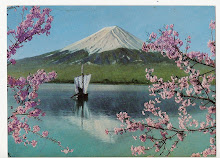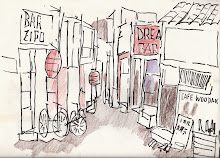THE MONGOL INVASIONS OF JAPAN
In the 13th century, Kublai Khan, grandson of Genghis Khan and the Mongol Emperor (Yuan Shi-zu) who founded the Yuan Dynasty of China, envisioned to succumb Japan and incorporate it as a tributary state of the Mongol empire. In 1274 and 1281 armies were despatched from the Korean peninsula and China in attempts to land on Japan in today's Fukuoka city area in north Kyushu.
It was so recorded that a thunderstorm harassed north Kyushu island in 1274 when the Mongol (Yuan) army was fighting, and again in 1281 a typhoon hit north Kyushu island while the Yuan soldiers were on board their ships preparing for a major landing operation. In both instances the Yuan armies suffered severe casualties from these natural calamities and the invasions were aborted. These "divine" winds have come to be known as Kamikaze which, especially during the war periods of pre-1945 Japan, has been fostering a belief in Japan in the sacredness of the Japanese nation.
After the first invasion of 1274, the Japanese samurai built a stone barrier of 20 km long bordering the coast of Hakata Bay of today's Fukuoka city. This stone barrier, on which the Japanese soldiers forcefully fought in resistance, effectively prevented the landing of the Yuan (Mongol) army on the shore of Hakata (now in Fukuoka city) during the second invasion of 1281.
The Yuan armies were made up of Mongol, Korean and Chinese soldiers
TEXT AND IMAGE FROM WIKIPEDIA
References cited with image on Flickr Photostream
****Moved***** to WordPress: phillipsblogs.blog
3 months ago














No comments:
Post a Comment